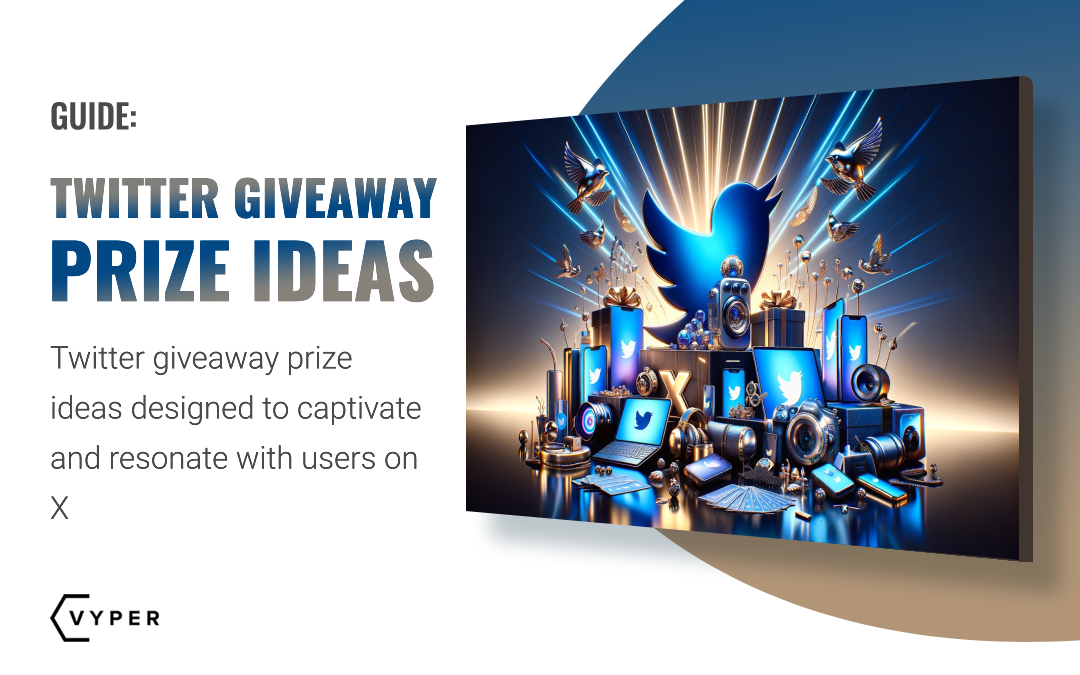Social Proof is the idea of people conforming to something based on the influence of others. When a person visits your website and begins to favor your brand upon reading a testimonial from an industry expert, that is considered social proof.
In the past, massive brands like Amazon, Mailchimp, and Fitbit have leveraged social proof in their efforts to improve sales conversions. Now, modern online businesses are using similar tactics to quickly gain a consumer’s trust and close the deal.
Social proof isn’t just limited to expert testimonials. There are multiple ways your brand can use social proof to boost sales.
In this guide, we will share with you 10 exceptional social proof strategies that will allow your brand to increase sales conversions and develop a stronger customer base.
Let’s get started!
- What is Social Proof?
- The Concept of Social Proof
- 10 Social Proof Strategies to Increase your Sales Conversions
- #1 Customer Reviews
- #2 Video Testimonials in Ads
- #3 Case Studies
- #4 Media Mentions
- #5 (Micro) Influencer Marketing
- #6 User Generated Content (UGC)
- #7 FOMO Pop-ups
- #8 Use Social Media as your Social Proof
- #9 Certification and Trust Badges
- #10 Storytelling Social Proof
- How To Get Your Social Proof?
- Bonus: Social Proof and Reviews with Rachel Tyers
- Conclusion
FREE DOWNLOAD: Get all Our Contest & Giveaway Marketing Guides, Checklists, and tutorials that have helped 100’s of brands collect 15k+ emails in under 21 days!
What is Social Proof?
Imagine you’re walking down the street one day looking for somewhere to have lunch. There is a selection of eateries to choose from, several of which are empty. There is one, however, that has a good selection of different people eating at the tables. Which one would you choose? Probably the one that’s already got some customers.
Let’s look at another example in the online world. You’re looking for a new pair of shoes and visit several websites. A couple of the websites you visit have a very active community. The others are completely blank. Studies have shown that you’re more likely to browse a site that has an active community.
Both of these scenarios are examples of social proof at its most basic. The idea behind social proof is that people tend to follow the actions of others. So, if lots of people behave in a certain way, it’s got to be the right way to behave, right?
The concept of social proof and people following the actions of others was first coined by famous psychologist Robert Cialdini. He is recorded as saying that:
“We view a behavior as more correct in a given situation to the degree that we see others performing it.”
Consumers tend to require proof from their peers and unbiased third parties, that a product or service is worth buying. We’ve become a little bit cynical over the years and tend not to believe the brands selling the products quite as much as we used to.
On the other hand, social proof is evidence that something is popular and by using this, businesses can stack the deck in their favor and increase sales.
The Concept of Social Proof
There are three key elements around which the concept of social proof revolves: uncertainty, similarity, and expertise.
- Uncertainty: When people find themselves in a situation they’re unsure of, they need confirmation.
- Similarity: People tend to be influenced by the buying choices of those in the same social and income group as themselves.
- Expertise: When we find ourselves in an uncertain situation, we tend to follow others, especially if they’re considered experts in a specific area.
If you like the sound of social proof and want to know how you can use it to your advantage, let’s introduce 10 of the most common strategies.
10 Social Proof Strategies to Increase your Sales Conversions
Here are some of the best ways to generate social proof and capitalize on its ability to get consumers to believe what you say about your products or services is accurate and that you offer something valuable.
#1 Customer Reviews
According to research done by Nielsen (a US information, data, and market measurement firm), 92% of people trust a recommendation from a friend, while 70% will trust one from someone they’ve never heard of before.
One of the most common ways to use social proof is customer reviews, testimonials, or feedback. For example, Amazon, one of the world’s leading online retailers, uses customer reviews to great effect. They display these reviews for each product sold on their website.
Almost all big brands do the same, and they tend to ensure the reviews are one of the first things any potential customer sees when looking at a product.
The best way to gather customer reviews is to ask customers to leave them. The simplest way to do this is to email customers after they’ve placed an order. If they’re happy with their purchase, they’ll likely give a review.
If your customers are a little shy about leaving reviews, incentivize them by offering a coupon code for their next purchase, for example.
#2 Video Testimonials in Ads
This is taking the customer review one step further, and it can be very persuasive. To start with, it builds confidence in your brand, increases conversion rates and sales.
Video is very effective because it’s more engaging, eye-catching, easy to consume, and dynamic. You can also squeeze a lot more information into a video.
A good video testimonial should last no more than 60 seconds and shouldn’t be too vague or general either. Ideally, the video should give specific facts and information relevant to future customer needs. Captions are also a helpful addition. Above all, such reviews should be personal.
One of the best tools for gathering video testimonials is crowdy.ai. Use it for existing YouTube and Facebook videos, or record your own. Then, use a video-on-demand platform to host those same recordings in high definition where they’ll be accessible by all viewers!
One last tip is to remember to get the customer’s permission before using their testimonials. This is particularly important if the customer’s face is visible.
#3 Case Studies
Case studies are a more formal option, but you can use them to provide social proof of the highest authority.
Case studies leverage the idea that in-depth reviews hold more value and are more reputable than brief reviews or comments.
Shopify uses customer success stories in the form of long-form case studies to highlight the worth of its eCommerce software.
When you’re creating case studies, it’s vital that you include actual data. If, for example, you’ve got a product that increases conversion rates, provide before and after examples. Also include a problem statement, how your product helped solve the problem, and any final results.
Aim to publish a variety of different studies, each of which highlights a specific benefit of your service or product. Naturally, any customers visiting your website will look for a study that most resembles the problem they need to solve.
#4 Media Mentions
Media mentions add social proof because they imply that they endorse you. TechCrunch is a popular media site for startups, for example. So if you can get your product or service mentioned on the site, it could potentially increase your traffic.
Another option is to include quotes from news mentions, such as Entrepreneur Magazine, Wall Street Journal, and Forbes. One way to find out who’s talking about you online is to set up a Google Alert to monitor mentions of your brand. It’s easy to do and doesn’t cost a dime.
#5 (Micro) Influencer Marketing
The purchasing decisions people make are generally influenced by other people. This is because humans have a natural tendency to mimic the behaviors of those around them, especially if those people are respected.
You’ll find influencer endorsements used on the opening pages of books, on the jackets, and on the covers. But they also have a place in numerous other areas.
Celebrities are often very effective influencers to have on board, but there’s also a place for micro-influencers. These are people with a social media following bigger than the average person but smaller than a celebrity.
Micro-influencers have value due to:
- Targeted follower bases
- More affordable
- Micro-Influencers are real people and, therefore, more authentic
The reason these influencers are happy to promote your products could be because they like them, but it might also be in exchange for money. But how do you find them?
There are several tools or services you can use to help you find the right influencers. They allow you to search for any potential influencers, no matter how big or small their audience. You can also narrow your search based on a range of demographics.
Money has already been mentioned as a way of encouraging these influencers. Alternatively, you might offer Shout Outs, product discounts or giveaways, or a commission.
Victoria’s Secret chose the micro-influencers approach when it found 175 college-age women and paid them to post Instagram images featuring Pink merchandise.
Click here to learn more about hosting a giveaway with an influencer.
#6 User Generated Content (UGC)
Consumers are often happier to buy a product if they see that others have used the product successfully. UGC is an umbrella term that covers any content your customer might create. It can take various forms, such as in-depth video reviews, social media posts, podcasts that mention your products or brand, and blog reviews.
Instagram is the go-to platform and best source of user-generated content for millions of brands. As a result, it is considered one of the most effective platforms if you want to promote a product or develop your brand.
Boxed Water is a startup company that uses customer Instagram photos on its own Instagram account. Here is just one example of the kind of posts this sustainable drinking water company regularly publishes.
Things to consider when using UGC:
- Build anticipation: It’s much better to pick a specific day for your user-generated content campaign rather than stretch it out over weeks or months. It will allow you to build anticipation and hopefully be flooded with content.
- Refresh whenever necessary: If you decide to run a long campaign, change things up occasionally to keep people interested and encourage new customers to participate.
- Provide unique and helpful tools: Your customers will be happier to participate if you make it fun and easy. For example, something as simple as hashtags they can use in Twitter submissions or a live chat outsourcing solution that helps your customers with their questions on the go.
- Curate your gallery: When publishing content, use your judgment and remember the maxim: Quality over quantity.
- Reflect your brand’s lifestyle: Use content that reflects customer experiences and lifestyles.
- Provide a unique perspective: Customers love to see what goes on behind the scenes. Consider using photos from brand events and product launches.
- Keep the rules simple: It’s always better to make things as easy as possible for people who want to participate rather than going over the top with submission requirements and rules.
- Engagement is key: As soon as you launch your under-generated content campaign, remember to feature it on your social networks and engage with your audience. Thank them for their submissions, and don’t forget to throw in some compliments.
- Incentives can be very persuading: Free shipping, discount coupon codes, and other incentives can encourage satisfied customers to provide UGC. Embed an upload button on your website, and it’ll make uploading a video or photo easy.
#7 FOMO Pop-ups
FOMO stands for Fear of Missing Out. The concept behind this social proof strategy is that a large group of people are collectively more intelligent and can be trusted by more than one single person, even if they happen to be an expert.
When you visit your local restaurant, and there’s a section of the menu that lists the “most popular dishes,” this is an example of FOMO Pop-Ups in action. The “best selling products” section of an eCommerce website is another excellent example.
Amazon uses this strategy to significant effect when it lists an item, stressing that a limited number of them are left in stock.
Here’s a list of some techniques you can use to improve your sales through FOMO:
- Set a time limit
- Utilize social proof
- Quote influencers or celebrities
- Offer product bundles
- Take an omnichannel approach
- Hone your messaging skills
- Take advantage of the human competitive spirit
- Showcase any opportunities customers might have already missed
#8 Use Social Media as your Social Proof
Social media is a very powerful medium if you want to leverage social proof.
Social Media Giveaways and Contests
Giveaways and contests have been a trusted marketing tool for many years. However, you can use social proof to make them even more successful. Quite often, nowadays, people need an incentive or a reason for them to take action.
If you’re looking for a way to generate leads, you need to do more than ask visitors for their email addresses so you can send a newsletter update.
A giveaway is a fundamental concept. The top brands have been using them for decades. For a giveaway to be successful, you must take the following steps:
- Offer something your target market wants
- Encourage people to enter the giveaway to win the prize
- Participants have to either collect points or complete specific actions
- The winner or winners gets their prize
Social Media Takeovers
Social media takeovers are an excellent way to expand your influence and reach an audience that might not be very familiar with your brand. What happens is an influencer takes over your social media posts for an agreed length of time. Rather than using an influencer, an expert is another option.
One excellent example is when the city of Calgary had a social media takeover of its Instagram platform.
A social media takeover is easy enough to sell because you’re not only leveraging the influencer’s audience, but they’re getting access to your audience too.
Social Media Shares and Following
Letting everyone know about your social media followers might seem a little out-of-date. Still, it’s a great way to let your target audience know how many other people with similar tastes buy your products.
Here’s how Hubspot boasts of its social media following:
Website visitors can become social media followers with one quick click, and it makes your brand appear more trustworthy. All you need to do is add a share button on your product pages or perhaps on your blog.
#9 Certification and Trust Badges
Certification and trust badges have stood the test of time when it comes to improving sales. One study was conducted to determine the most effective eCommerce trust badges and the top of the list was the Norton Site Seal.
One form of certification that can be beneficial is the blue checkmark you get when you’re verified on Facebook, Twitter, and Instagram. You not only gain credibility and respect, but you also get access to special features reserved for verified pages or accounts.
If your business has obtained accreditations or specific industry certifications, you should also be proud of them and display them on your website. Most accreditation and certification organizations will have a logo or badge you can display for free.
#10 Storytelling Social Proof
Stories and real-life examples can be more trustworthy than plain statistics. This is because they tend to be remembered more, whereas numbers are easy to forget.
Storytelling is also very persuasive because we can easily put ourselves in the storyteller’s shoes. So when you’re asking customers for testimonials and writing case studies, ask customers for a description of their situation before as well as after they bought your product.
Such an approach allows you to paint an accurate picture of the customer’s problem, why they chose your product, and how it helped.
SGT Auto Transport is a company that has embraced storytelling by including some customer stories on all pages of its website.
How To Get Your Social Proof?
If you’re just starting out, you may be wondering how you can build trust if you haven’t got any third-party evidence of it. Here are a few quick and simple ideas:
- Give details: You can improve trust in your brand by going into more detail about what the customer can expect to get.
- Make promises: Make your commitments specific but don’t exaggerate. Make the promises real because you’ll need to stand behind them.
- Show yourself: Show potential customers that there is a real person behind your business and offer.
- Use social testimonials: Use social media interactions to build up third-party social proof.
- Industry statistics: Find industry statistics to back up any claims.
Bonus: Social Proof and Reviews with Rachel Tyers
Rachel Tyers is the VP of Strategic Partnerships at Okendo, a service that is focused on Review Generation. Okendo’s excellent products and services helped thousands of Shopify stores build trust with their customers.
In the interview below, Rachel explains why social proof is absolutely crucial for online brands. Click the play button below to listen or visit YouTube to watch the full episode.
Conclusion
Social proof is crucial if you want to increase sales because it helps build trust, add credibility, validate, and simplify consumer buying decisions. There are many ways you can leverage the power of this strategy, the most important of which have been introduced above.
Hopefully, you’ll now feel more inspired and confident to try out some of these ideas for yourself. Pick the ones that work best for your business, and you’ll soon be flooded with conversions and more sales.
About The Author
Maria Mladenovska is a Content Manager at ThriveMyWay.com – a one-stop resource for learning how to make money online on your own terms. She is passionate about marketing and her curiosity to learn is ever-evolving.
She focuses specifically on writing and editing engaging articles, blog posts, and other forms of publication. You can connect with her on LinkedIn or Twitter.
Jack Paxton is the co-founder of VYPER, a marketing tool that helps brands build email lists, social followings, and revenue using viral giveaways, referral, and reward programs. After millions of dollars spent testing different marketing strategies at his marketing agency. He then also co-founded Hyax a fast, conversion & design-focused course and funnel builder for creators.






















Hey Adesodun
This post was originally published in November 2021
Hi Maria,
This is a wonderful write up and amazing strategies for businesses especially the small and medium enterprise looking to grow their brand.
Can you share the year this was written? Thank you.
Hi Maria,
Social proof gives confidence to the buyer. I even prefer to check out the review before making a purchase. Also, if I found the brand mentioned, that makes us feel good. All these results in sales conversion.
Thank you for sharing such an informative blog on the power of social proof.
Hi Maria,
It was a fantastic read! Before reading your article I never knew the power of social proof. I wasn’t even aware of the term. Thanks a lot for informing raiders like me. I think the strategies you shared will definitely add value to any brand or business. I am also looking forward to using these strategies for my own website. I do have some case studies of my previous clients, do you think adding product conversion rates would be a good addition?